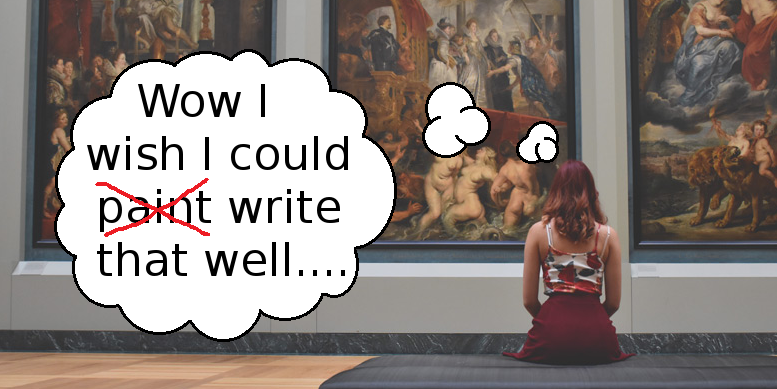Last week on Masterpiece Monday we looked at the magic of one really well-written line, but this week we’re back to the actual magic with Harry Potter and The Sorcerer’s Stone.
Showing vs. telling. Ah, the term we all love to use. As writers we’re supposed to show show show and never tell. Just like a good documentary, we’re supposed to give the reader all of the information visually and let them decide for themselves what it all means.
Except that’s not entirely true. Unlike a video documentary, writing relies on the reader following along with the writer pulling words out of their imagination. If there’s a confusing sentence or section, then we have to go back and reread – or even worse just stay confused – taking us out of the story.
That’s why “telling” can be a powerful tool. Sometimes the reader just needs a little push in the right direction to ensure they don’t get lost or confused. Showing vs. telling shouldn’t be thought of as “always show and never tell,” rather it should be more like “showing is fries and telling is ketchup.” A little bit goes a long way and can make the final product even better.
Here’s an example from Harry Potter of how “telling” can help make a scene even better:
“Harry had never even imaged such a strange and splendid place. It was lit by thousands and thousands of candles that were floating in midair over four long tables, where the rest of the students were sitting. These tables were laid with glittering golden plates and goblets. … Dotted here and there among the students, the ghosts shone misty silver. Mainly to avoid all the staring eyes, Harry looked upward and saw a velvety ceiling dotted with stars.”
What a beautiful scene, but did you notice that first sentence? It’s not “showing” us anything. It’s not even “showing” us what Harry’s expression is like; it’s just “telling” us exactly what he’s feeling.
Many editors would put a red line through that first sentence, but I disagree. It sets up the rest of the paragraph to let us know what to expect, making it easier to take in. More importantly, it lets us know what’s going on inside Harry’s head. Just giving the reader a description of the Great Hall is fine for letting the reader decide what to think about it, but this is a book about Harry Potter, and we want to know what he thinks about it
Without that first line, the scene would feel much more detached. As a writer, it’s important to keep your reader grounded in the world you’re creating, so if they start to float away that’s a problem. Using a bit of “telling” is like using sandbag weights on your hot air balloon – too much and you’ll never take off, but with just a little, you can take your ready for an awesome ride… while still managing to stay in the atmosphere.
Thanks for reading! Next Monday we’ll be back with another masterpiece that uses something we don’t see often in English: sound effects. See you then!
(Featured image via GAHAG, edited by me)

Comments are closed.